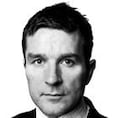Independent politicians are not a new phenomenon. The legendary Alfie Byrne, who was a TD and mayor of Dublin a record 10 times, was an Independent for most of his career. In 2004 an Independent candidate in Roscommon, John Kelly, won more votes than the total of the three Fianna Fáil candidates in the Ballaghaderreen area.
What has changed is the number of Independent councillors in Ireland. In 2007 there were 87 Independents out of 883 councillors, comprising about 11.5 per cent of the first preference vote.
Now there are about 195 Independents (that’s 218 if you include the 23 councillors from Independent Ireland). They took almost 27 per cent of first preferences in last Friday’s election.
The John Kelly example comes from All Politics is Local, the seminal 2009 book on local politics by UCC academics Liam Weeks and Aodh Quinlivan. They posited there were a number of factors behind the presence of so many Independents in local elections. Because no national issues were at stake local grievances could come to the fore.
READ MORE
Roscommon was a good example. Hospital candidates abounded to campaign against the downgrading of the accident and emergency department. Six of the 26 council seats at the time were Independents.
In 2024 the four mica councillors in Donegal, with their 100 per cent redress demand, are an example of that single-issue candidate.
Weeks and Quinlivan pointed out that local elections have tended to be more candidate-focused so party brand is less important, even for party candidates. The small size of local electoral areas, as well as the fact they are multiseat, allows candidates to be well recognised in their communities.
Others are supported because they are seen as “go to” people in the community, to fix problems or make representations. The Healy-Raes in Kerry are a prime example of that.
In the past Independents were a large presence in Irish politics compared to elsewhere but still very much a minority, especially when it came to the Dáil. Weeks and Quinlivan noted that the vote for Independents in general elections was about half (less than 7 per cent) of that in local elections (12 per cent) up to the first decade of this century.
David Farrell, professor of politics at UCD, points to other factors. It is easier to get a nomination as a candidate in Ireland than elsewhere. The bar for entry is low. In addition, he says, the electoral system in Ireland – single transferable vote and proportional representation with multiseat constituencies – is more geared towards candidate-centred politics.
Certainly the success of the four Independents who supported Bertie Ahern’s Fianna Fáil government in 1997 in securing local deals showed how Independents could have influence. The effective hyper-localism of politicians like the Healy-Raes and Mattie McGrath have also contributed to the impression that Independents hold more sway than party TDs.
The typology of Independents varies as well: from “gene pool” councillors who have left parties; to ideologues on the left and the right; to community-based candidates who have a reputation for getting things done. At least 10 Independent councillors in Galway City and County and local TD Noel Grealish are former PDs but really loyalists of the late Bobby Molloy. Similar groups have emerged in Wexford, supporting Verona Murphy, and in Tipperary, supporting Michael Lowry.
Farrell says that politics in Ireland began to fragment from the 1980s. That created a peculiarly Irish problem. The decline of the established parties over successive elections has resulted in votes shifting around.
What greatly accelerated the rise of Independents was the collapse of the Fianna Fáil vote in 2011. Support for Independents rose from 15.6 per cent in 2009 to 22.78 per cent in 2014, and has continued on an upward trajectory ever since as the two main parties have diminished in size.
Pointedly that increase in support for Independents is also happening in national politics. Independents had 12.2 per cent support in the general election in 2020, twice the 6.5 per cent figure in the 2007 general election. That percentage is likely to increase again in the next general election.
Farrell indicates that Independents have increasingly become proxies for disaffected voters because of a lack of alternative political parties. “New parties have not broken through, and if they have they have not tended to last. So what happens when people no longer support the ‘traditional’ parties? Because new parties aren’t able to break through there’s nowhere else for voters to go except to vote for Independents. It’s a circular argument.”
- Sign up for push alerts and have the best news, analysis and comment delivered directly to your phone
- Join The Irish Times on WhatsApp and stay up to date
- Listen to our Inside Politics podcast for the best political chat and analysis














